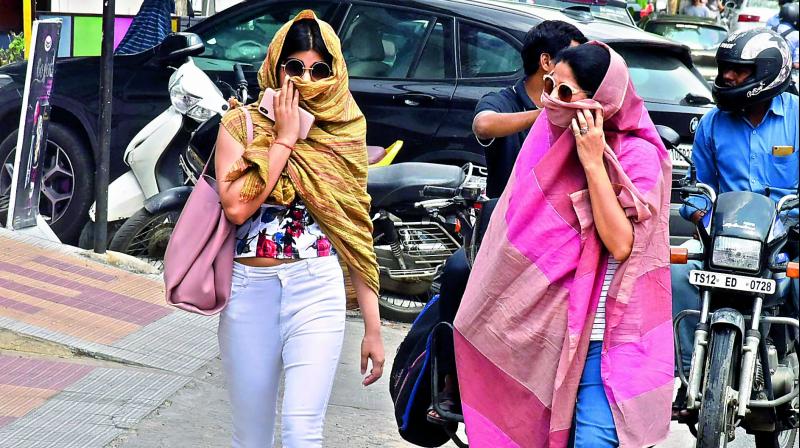Indoor heatstroke as dangerous as sunstroke
The most common health complaint in peak summer is sunstroke/ heatstroke

Contrary to the general belief that one can suffer dehydration and heatstroke only if they expose themselves to the direct heat of the sun, it is seen that even those working inside the house are falling sick, developing severe dehydration and heatstroke. In fact medical experts say that indoor heatstroke can be as dangerous as outdoor sunstroke. Children, elderly and bed-ridden people are more vulnerable.
Indoor heat stroke happens when the room temperature reaches around 40 degree Celsius and so does the individual’s body temperature whereas the ambient room temperature should be between 25 and 28 degree Celsius. Heatstroke can happen immediately or after a few hours or a day or two from exposure to the heat or sun.
Dr M Sheetal Kumar, senior general physician and diabetologist at Yashoda Hospital says, “In non-air conditioned environment, if the rooms are small, closed or not properly ventilated and the same air from the fan circulates, then after sometime, the room temperature can even reach five-six degrees more than the outdoor temperature. It is akin to the higher temperature inside locked cars with ACs off. It becomes a highly suffocating and dehydrating environment. In such a situation, air conditioners or air coolers should be used to cool down the room temperature to 25 degree Celsius or below. If either AC or the cooler is not available, open the windows for air flow and use wet drapes/curtains as coolants to absorb the heat. Those working in a kitchen environment should keep the exhaust fan on, allow ventilation, drink a couple of litres more water and every 15-20 minutes, rest in a cool or AC room.”
Stages of heatstroke
Dr Chaitanya Challa, senior consultant, internal medicine and critical care and director, Health at Homes, Surgylife, avers, “It is even more challenging to detect dehydration in dry climate, say in cities like Hyderabad as opposed to humid places like Chennai or Vizag. It is because one doesn’t usually sweat in dry weather. Therefore, one should consciously drink more water and stay hydrated if they live in non-humid cities. Dehydration can occur both indoors and outdoors, thereby causing heatstroke.”
Elaborating on the various stages of dehydration, Dr Chaitanya says, “In the first stage, one experiences severe fatigue, muscle weakness and sweating. In the second stage, the body feels deep exhaustion and mental confusion. In the third stage, due to imbalance in the electrolytes in the body, the individual becomes giddy, loses consciousness and collapses. If treatment is delayed, heatstroke can be even fatal. If the affected person does not respond to administering ORS and fluids which should be given every half an hour and a cold water bath, then it is better to take the person to a hospital where IV fluids and appropriate treatment can be given. Usually, a person recovers from heatstroke within a couple of days.”

